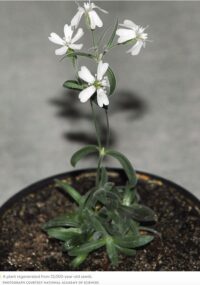
www.dailywire.com
MLB Legend Pete Rose Dead At 83
Major League Baseball hitting legend Pete Rose, who loved playing baseball as much as any man who ever lived, passed away on Monday at his home in Las Vegas, his agent has confirmed. He was 83 years old.
Rose’s agent Ryan Fiterman confirmed to TMZ that Rose had died and “the family is asking for privacy at this time.” A cause of death has yet to be reported.
Rose, who once said, “I’d walk through hell in a gasoline suit to play baseball,” started his pro career with the Cincinnati Reds, in 1963, when he won Rookie of the Year. His all-out, hell-bent-for leather style reminded old-time baseball fans of the legendary Ty Cobb, whose career hits record Rose would ultimately break. He was a 17-time All-Star and the National League MVP in 1973. He was the fiercest member of the legendary Big Red Machine in Cincinnati whose 1975 and 1976 World Series-winning teams are considered one of the best teams to have ever played in the major leagues.
In November 1978, Rose became a free agent, then signed with the Philadelphia Phillies, where he played for five years, becoming an integral reason why they won their first-ever World Series in 1980 after eight decades of waiting. At the age of 41, he played each and every game of the 162-game season in 1982. After a brief sojourn with the Montreal Expos in 1984, he finished the season and played two more back with the Reds, finishing with the most hits, most games played, and most at-bats of any player in the history of major league baseball.
The switch-hitting Rose started his career playing second base, but when asked to move to third base immediately played there, all part of his ferocious desire to win. He was famous for calculating his batting average on his way to first base after a base hit, and could quote at length his statistics against all of the great pitchers he faced. He said the Los Angeles Dodgers’ Sandy Koufax was the toughest pitcher he ever faced, and would take a coin and push it off a table to fall straight down, saying that was how impossible Koufax’s curveball was to hit. “I got 10 for 57 off of him. Get your calculator; that’s .175. When you don’t hit your weight off of a pitcher you’re doing pretty bad,” he joked.
His career was central to Rose’s life; he once said, “I’m just like everybody else. I have two arms, two legs and four-thousand hits.” He also said, “Willie Mays could throw better, and Hank Aaron could hit more home runs. But I’ve got enthusiasm. I’ve got desire. I’ve got hustle. Those are God-given talents, too.”
The Cincinnati-native and all-time MLB hits leader was banned from the sport in 1989 for gambling while he was a manager of the Reds.
The lifetime baseball ban also kept Rose — who won three World Series titles during his career — from being inducted into baseball’s Hall of Fame, something that has been the subject of contention for years among baseball fans.
Later in life, Rose said his one regret in life was betting on the games.
“There’s only one thing I would change if I had to live it all over again … I would obviously turn my life around and not bet on baseball,” Rose told the Cincinnati Enquirer. “Having said that, I feel like I’ve been a pretty good citizen.”
“You never read about me being in a bar after hours, beating up my wife, or getting into a fight with a fan and I was as gracious to everyone as I could be,” he added.

















